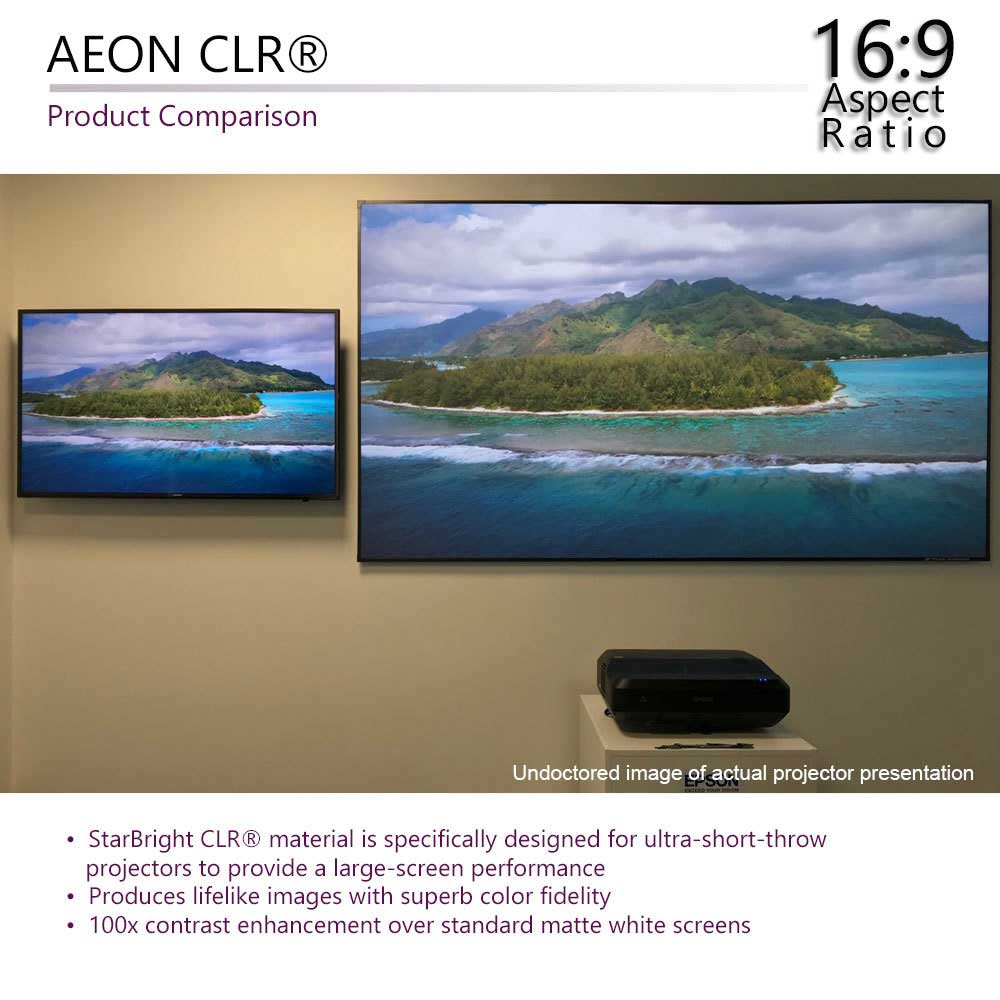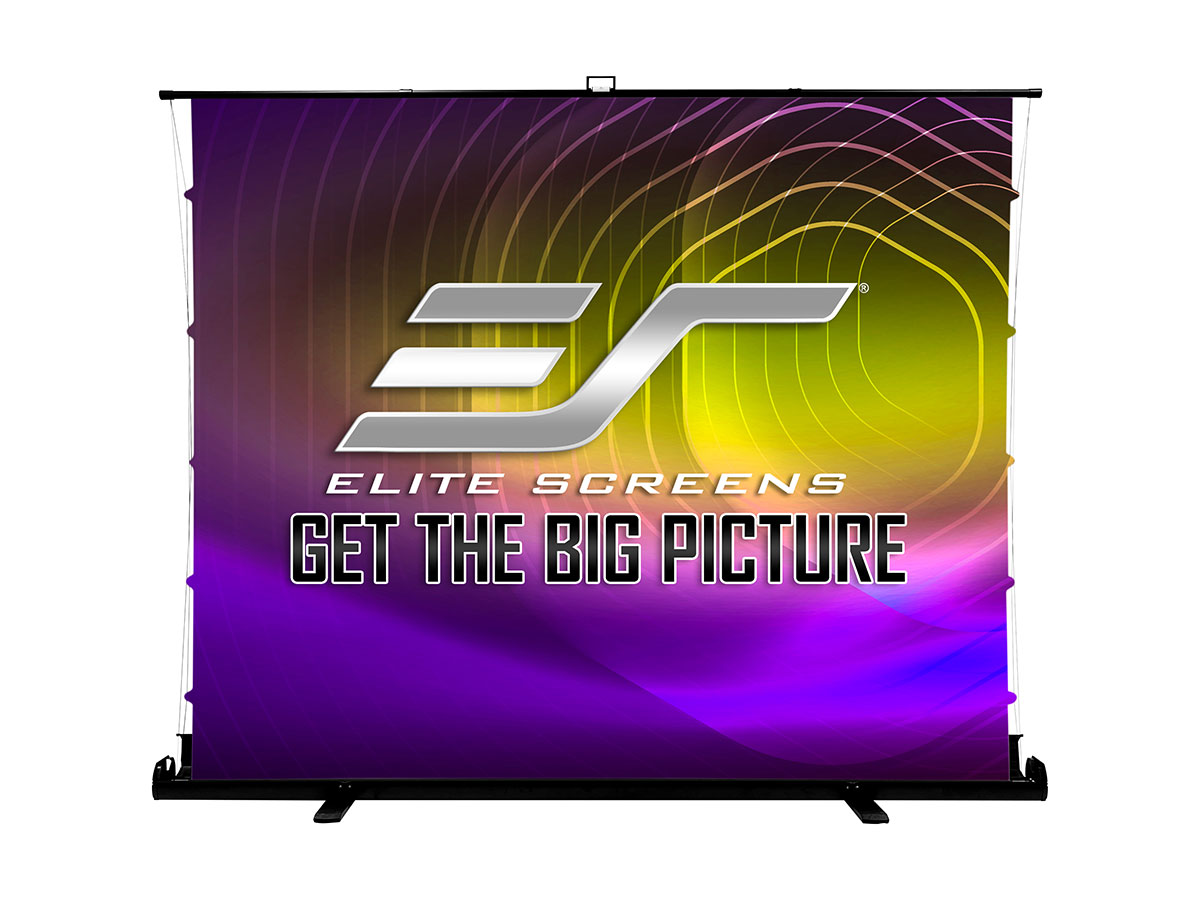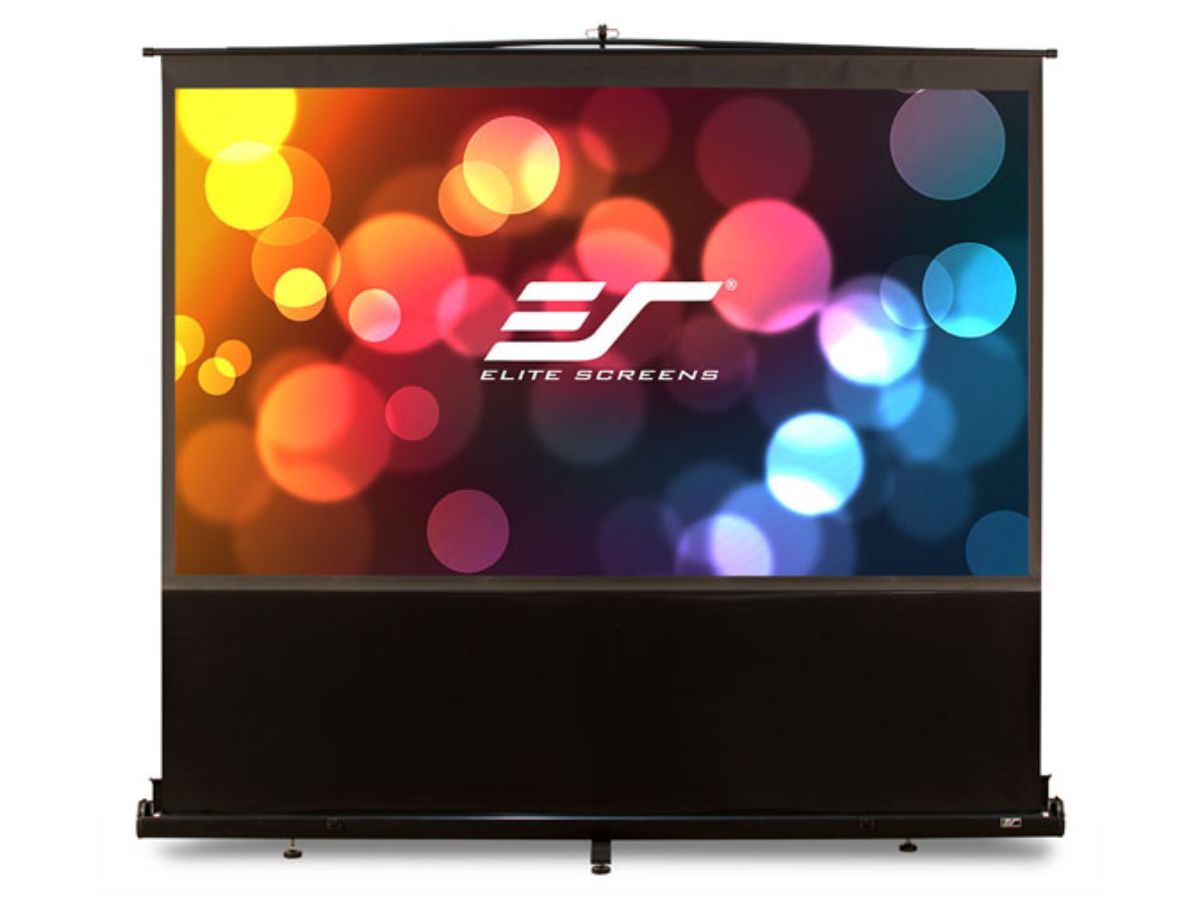Acoustic Transparency in Projection Screens: Is It Worth It?

Key Takeaways:
- Acoustic transparent screens deliver synchronized audio and visuals by allowing speakers to be placed directly behind the screen.
- Woven and perforated materials are essential for sound to pass through without distorting image quality.
- Floor rising motorized projector screens can offer acoustic transparency with space-saving benefits.
- Roll-up and rise-up acoustic projector screens are ideal for stylish, multi-use rooms that require clean aesthetics and discreet sound setups.
- Choosing the right screen gain, material, and tension ensures both stunning visuals and crystal-clear sound performance.
Creating the perfect home cinema or high-performance media room isn’t just about picking the right projector. Sound is just as vital, if not more so. An acoustic transparent screen is what makes the difference.
It is essentially a surface that allows sound to pass through without altering the way things appear. It allows your front speakers, especially the center channels, to sit behind the screen, making it sound as if the activity on the screen is coming from the speakers. This type of screen ensures that you never have to choose between clear pictures and immersive sound, whether you’re setting up a home theater or updating a boardroom.
Did You Know? Most commercial theaters use acoustically transparent screens to hide speaker arrays behind the image. Their material is engineered to be sound-permeable, allowing speakers to be placed behind the screen without compromising picture quality. Source
Why an Acoustic Transparent Screen Is A Good Choice?
The construction of an acoustic screen is what makes it so valuable. It doesn’t use solid cloth to stop sound; instead, it employs woven or perforated material to let sound through. Your speakers are just behind the picture, so you can’t see them, yet they are in perfect harmony.
Why it matters:
- Aligning visual and audio: In professional theaters, sound seems to emerge from the performers’ mouths or the center of the action.
- Cleaner Room Design: Speakers don’t have to be placed in weird places, such as on the side or under the screen.
- Immersive Soundstage: Music, dialogue, and effects sound more real and less “detached.”
Quick Tips:
- Depending on your speaker and the acoustics of your home, you may choose between woven and perforated versions.
- Great for media rooms and home theatres that include front-projection systems.
- It must be used in conjunction with a speaker arrangement that is compatible with it.
- Centre channel placement is essential.
Can You Get Acoustic Transparency with a Floor-Based Setup?
Definitely, and it’s becoming more common. Floor-based systems are an excellent choice if you don’t have much wall space or want a cleaner look inside. With a floor rising motorized projector screen or an acoustic floor up projector screen, you may have professional-level performance and mobility at the same time.
But here’s the problem: Not all screens that rise from the floor let sound through. You should look for specific types that combine screen tension with either perforated or woven cloth.
Advantages of acoustic screens that sit on the floor:
- Saves space: Ideal for areas that require dual functionality or simple décor.
- Motorized Lift: Screens rise from a sleek floor housing, and you can operate them from a distance.
- Flexible Speaker Placement: For high-fidelity sound, put speakers right behind a raised screen.
Pointers to consider:
- Look for screen designs that are tensioned to minimize surface distortion.
- Ensure the screen material allows sound to pass through; some cheaper options don’t.
- Ensure your speaker is positioned at the correct height so that it aligns with the center of the screen’s viewing area.
Do Roll-Up Screens Work for Acoustically Transparent Setups?
Yes, and many people like them because they can hide your screen when you’re done with it. A roll-up acoustic projector screen can roll up vertically, typically into the ceiling or a case, while still allowing sound to pass through.
That said, these displays need to be carefully thought out so that they are flexible, long-lasting, and sound good. This feature is common in a high-end electric projector screen.
What makes them unique:
- Subtle aesthetic: It folds up when not in use, making it great for conference rooms or fancy home theaters.
- Motorized Functionality: Works seamlessly with smart home controllers or systems that can be controlled remotely.
- Speaker Integration: This feature is ideal for speaker systems that are built into the wall or stand on their own and are discreetly hidden behind the screen.
How to use roll-up acoustic screens:
- Make sure it works with mounts on the wall or ceiling.
- Use in places where the light is controlled; most models work best in low light.
- Check the specs before buying a roll-up display to ensure it allows sound to pass through.
Rise-Up Screens: Are They Acoustic and Practical?
A rise-up acoustic projector screen offers the same discretion as a roll-up, but it rises from below rather than descending from above. This is particularly helpful in places where accessing the ceiling is difficult.
Some rise-up displays come with a hard case base that hides the screen and mechanical parts when they are not in use. Newer versions can also utilize materials that allow sound to pass through.
Helpful benefits:
- Portability: Some models can be easily moved from one room to another.
- Modern Design: The case is sleek and professional, so it looks good in both homes and businesses.
- Audio-Visual Sync: Sound emanates from hidden speakers, just like it does from sets fixed to walls.
Things to consider:
- There may be fewer screen sizes available than with fixed-frame versions.
- The price may be higher because the mechanics are more complicated.
- Always verify that the gain and resolution support are suitable for your projector.
What Should You Watch Out for When Choosing One?
Whether it’s an electric projector screen, a fixed-frame solution, or a floor-based setup, selecting an acoustic transparent model involves several critical considerations.
| Feature | Must-Have Reason |
| Acoustic Material Quality | Ensures clear sound without muffle or distortion |
| Screen Gain (0.8–1.3) | Balances brightness without hotspotting |
| Tensioning System | Keeps the surface flat for sharper images |
| Speaker Placement Compatibility | Ensures directional sound hits the listener’s ear level |
| Projector Brightness Match | Works well even with lower-gain acoustic screens |
Final Tips:
- Avoid placing acoustic screens in high-noise environments; sound clarity matters.
- For optimal results, combine with sound-absorbing wall treatments.
- Test speaker placement before final screen installation
Big Screen, Bigger Sound
The basic line is that you no longer have to choose between great sound and great pictures. An acoustic transparent screen helps you combine both without losing style or performance, whether you’re renovating your home theater or making a flexible media room.
When matched with modern solutions, the result is a media experience that feels rich, precise, and professionally built.
This isn’t simply an improvement; it’s a complete change.
Ready to Upgrade?
A world-class viewing experience begins with the right screen. If you’re investing in a sound system, ensure that your images don’t detract from the sound. Select a screen that showcases both of them.
Elite Screens offers a wide choice of professionally designed solutions for homes, studios, and businesses. This includes a rise-up acoustic projector screen and a woven fixed-frame screen.
FAQs
What is an acoustic transparent screen, and how does it work?
You can place speakers behind the projected image without anyone seeing them because an acoustic transparent screen allows sound to pass through its surface.
Can sound get through an electric projector?
Yes, some electric projector screens utilize woven or perforated fabric to allow sound to pass through and enable the motorized parts to function. This makes the experience more real.
Is it a good idea to have a motorized projector screen that comes up from the floor in a home theater?
A motorized projector screen that rises from the floor and features acoustic fabric looks neat and sounds good, eliminating the need to mount it on the wall.
What is the best way to use an acoustic floor-up projector screen?
If you don’t have a lot of room and need to hide speakers and set up the screen above them, an acoustic floor-up projector screen is a great choice.
Are roll-up acoustic projector screens suitable for spaces with multiple uses?
Yes, a roll-up acoustic projector screen is great for multipurpose spaces because it can be rolled up and down, allowing sound to pass through easily.




